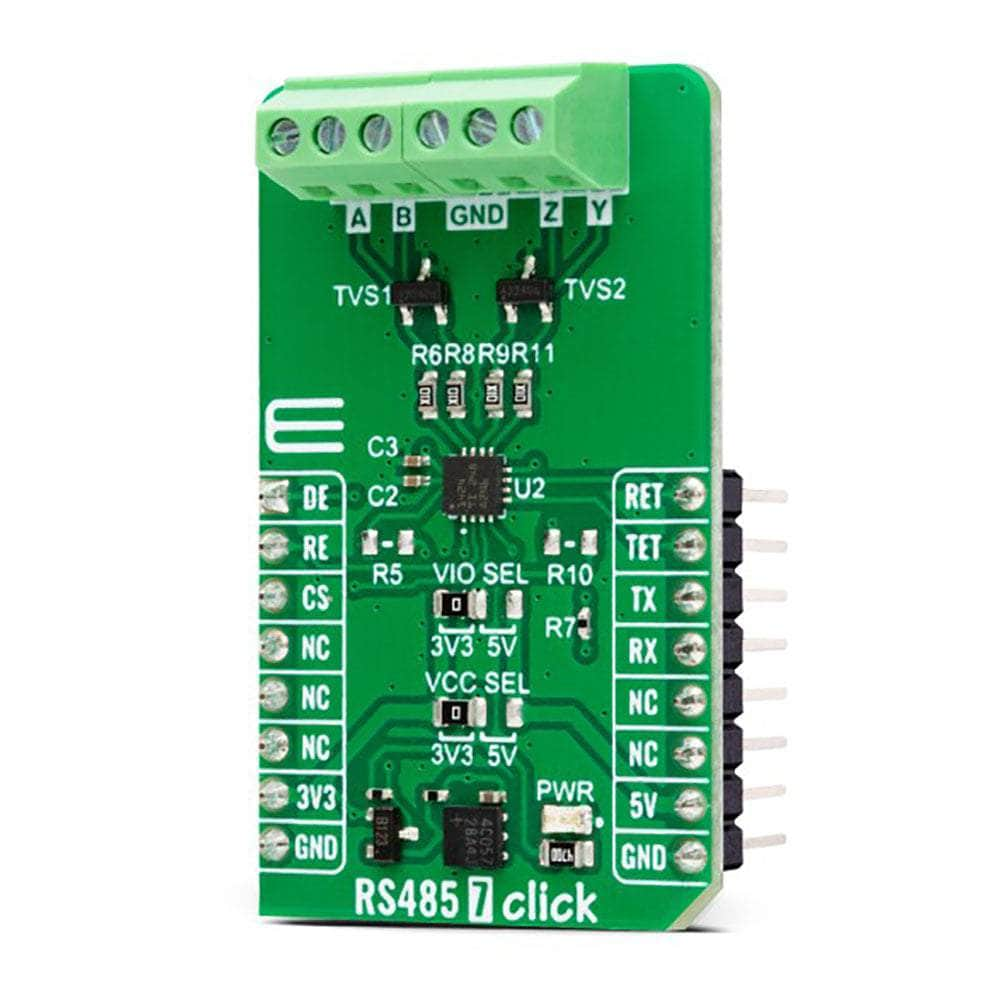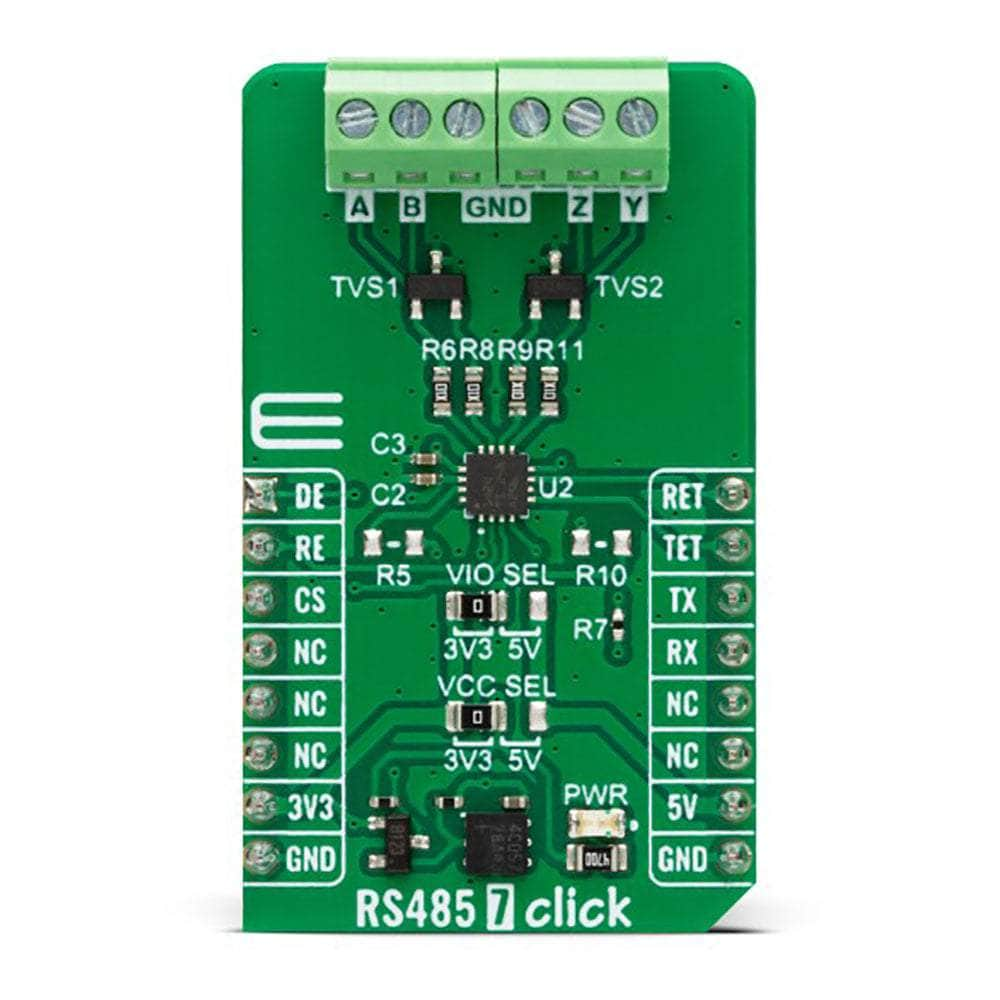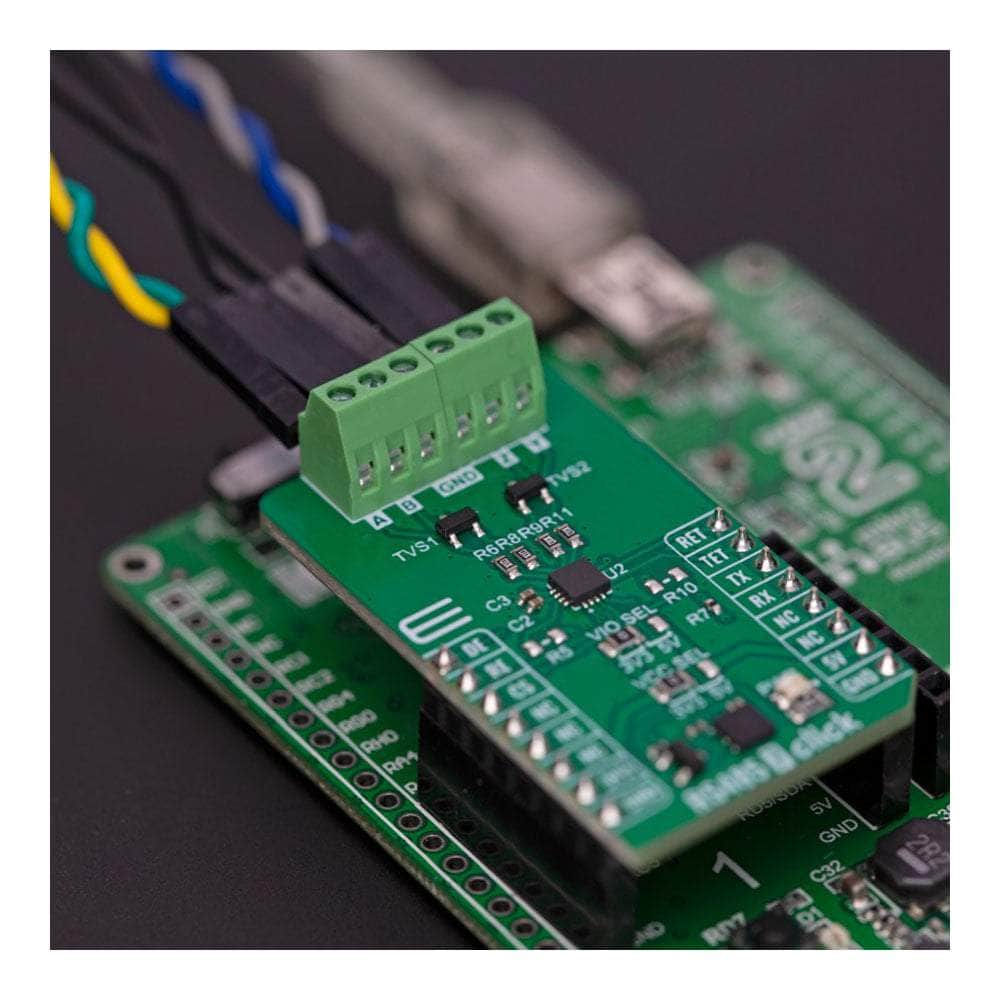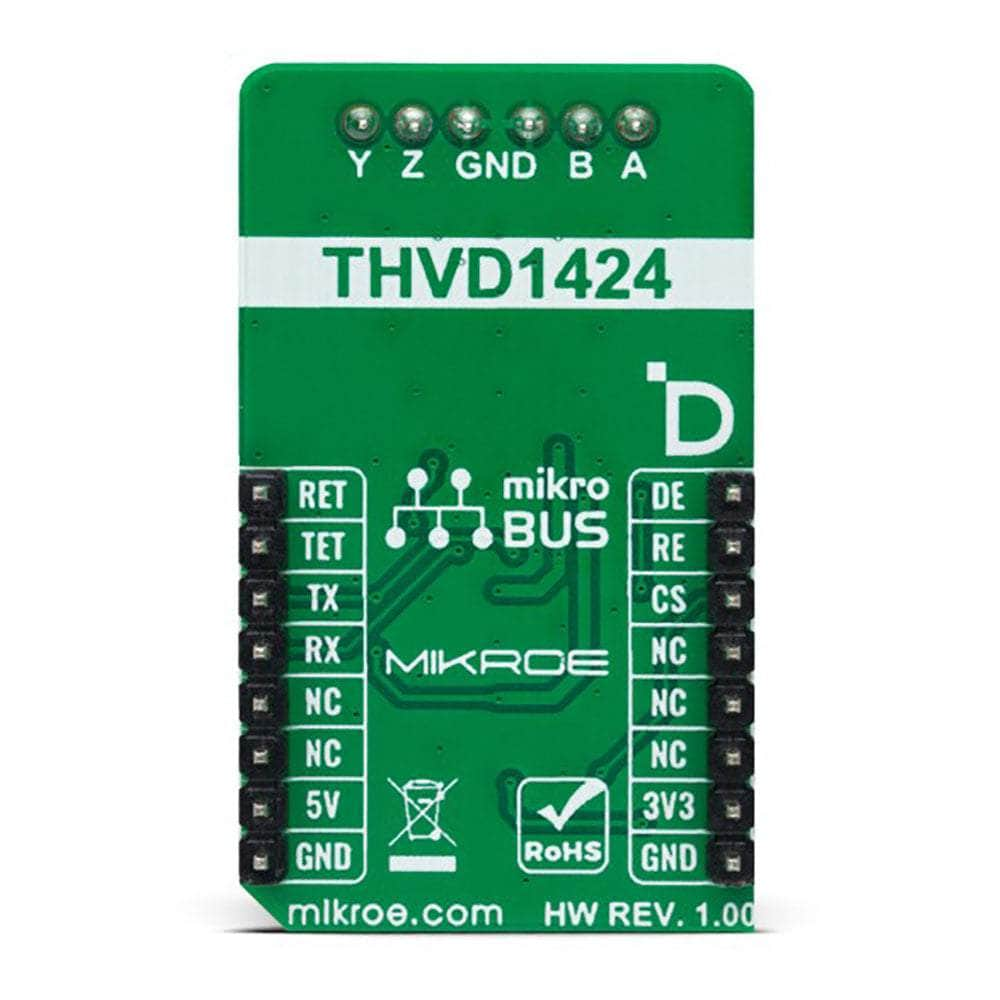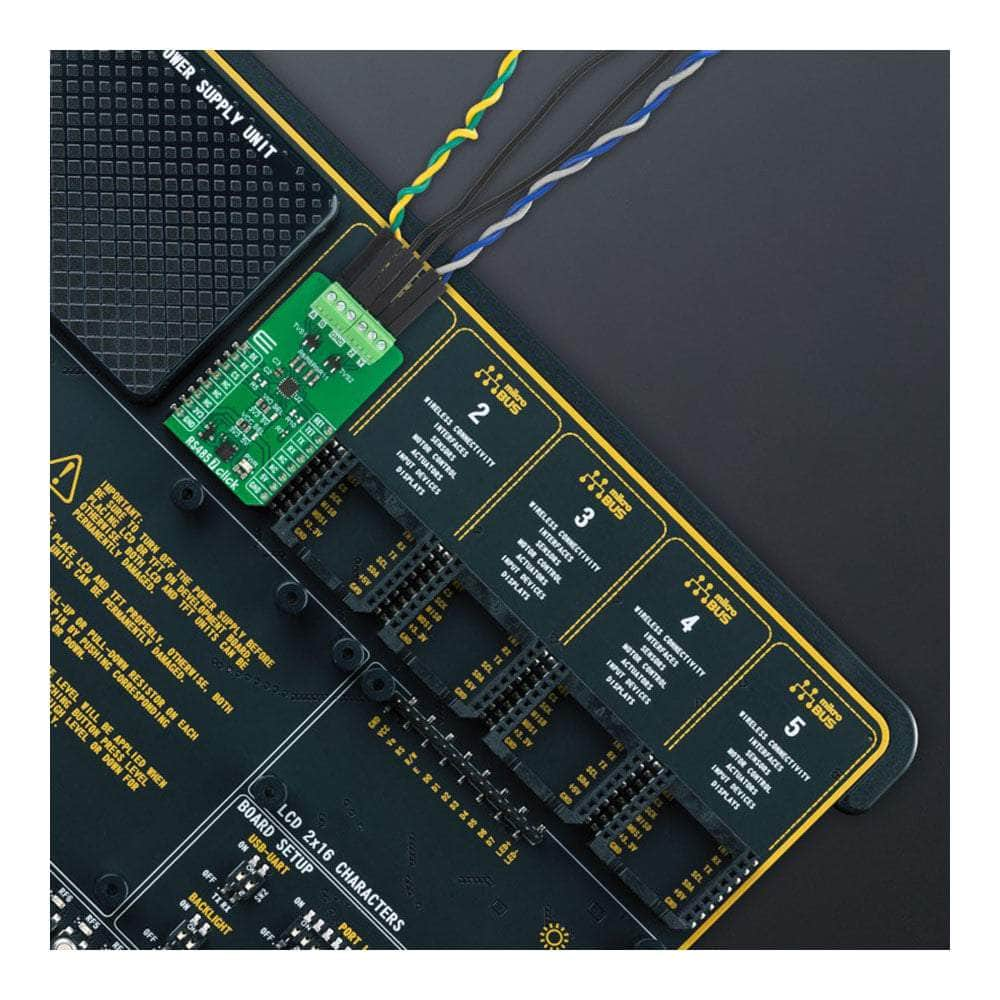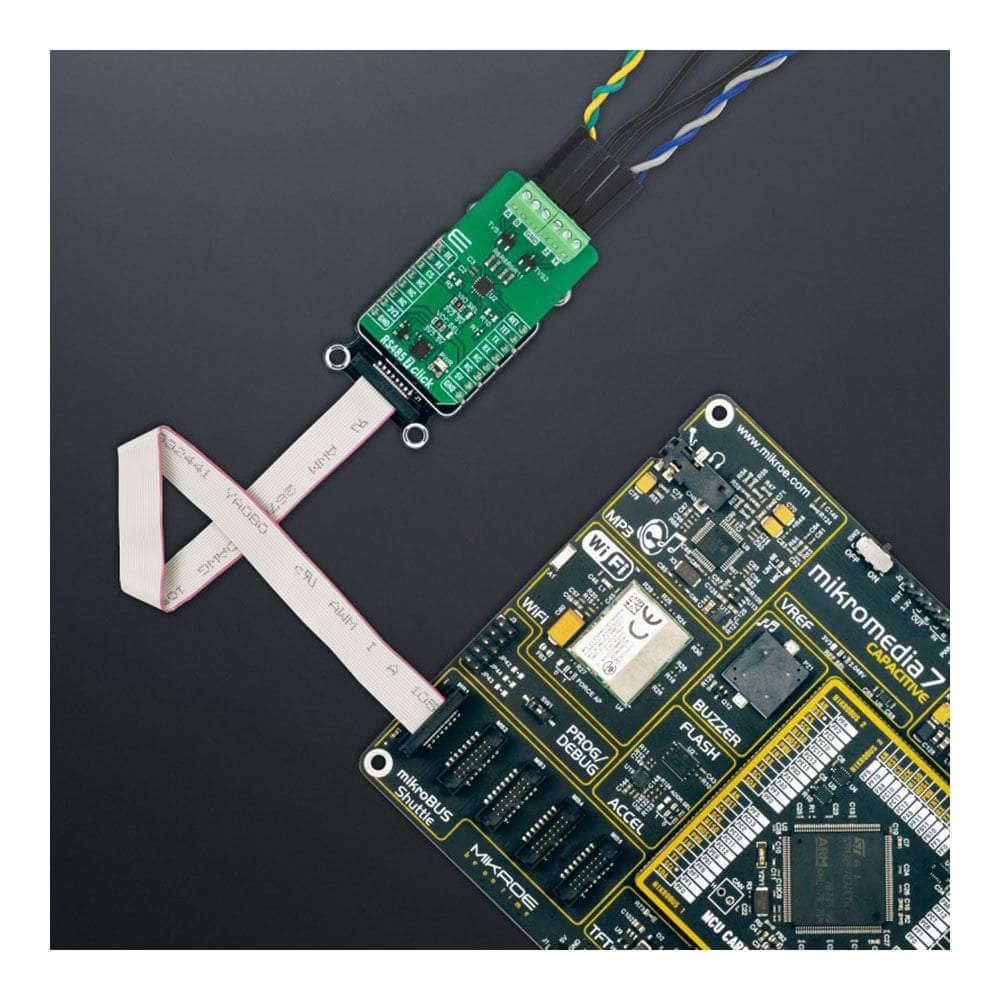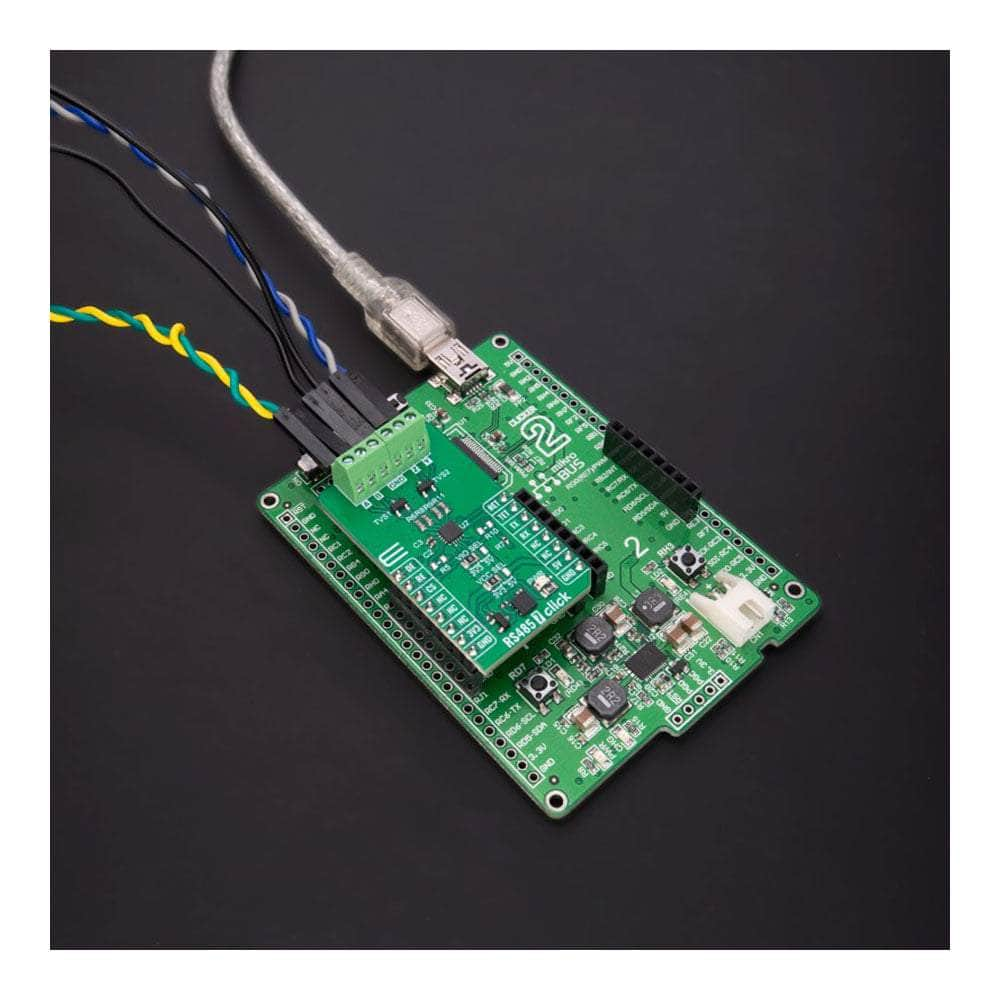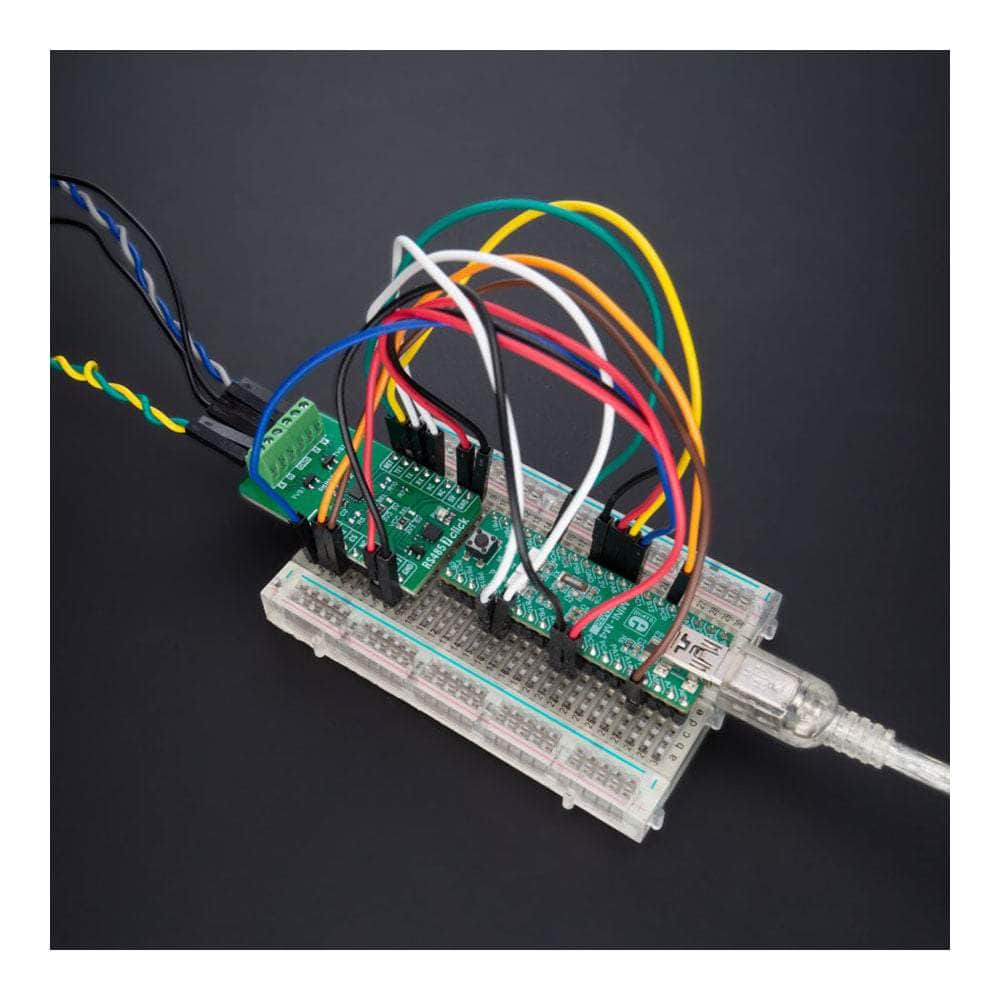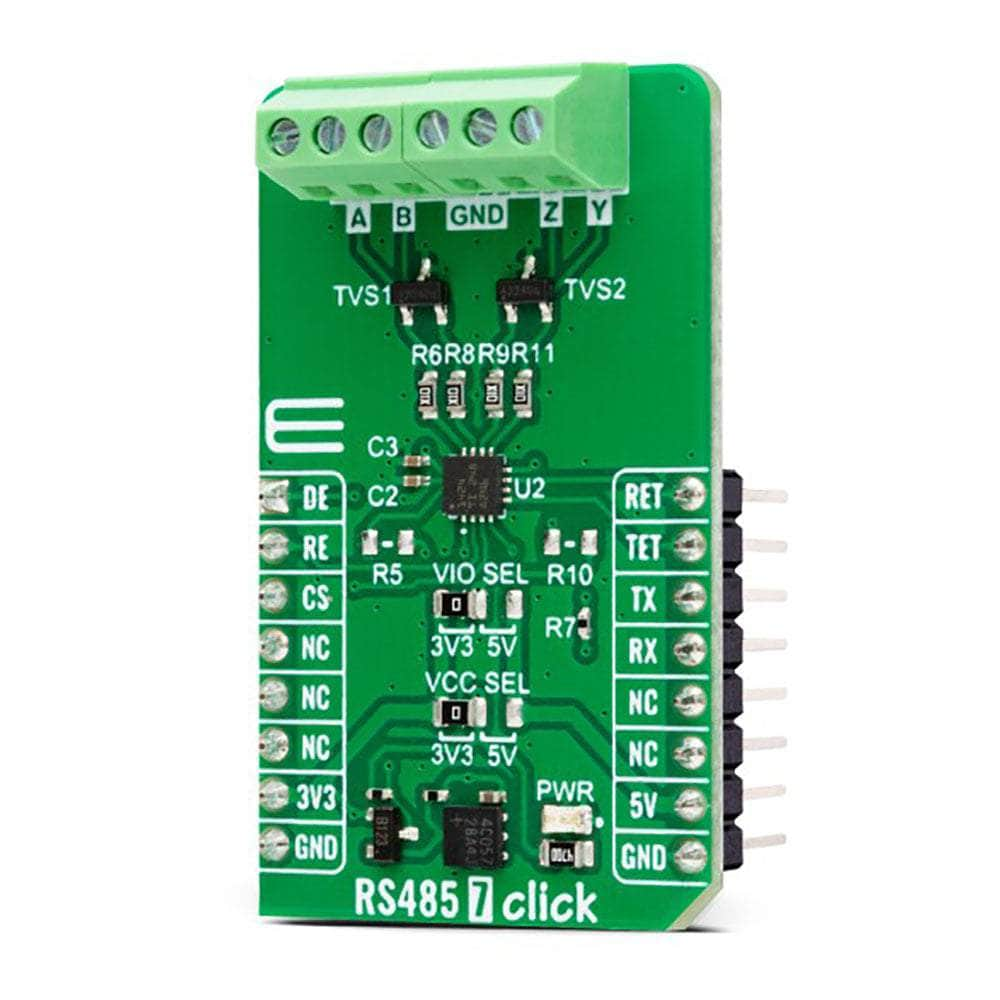
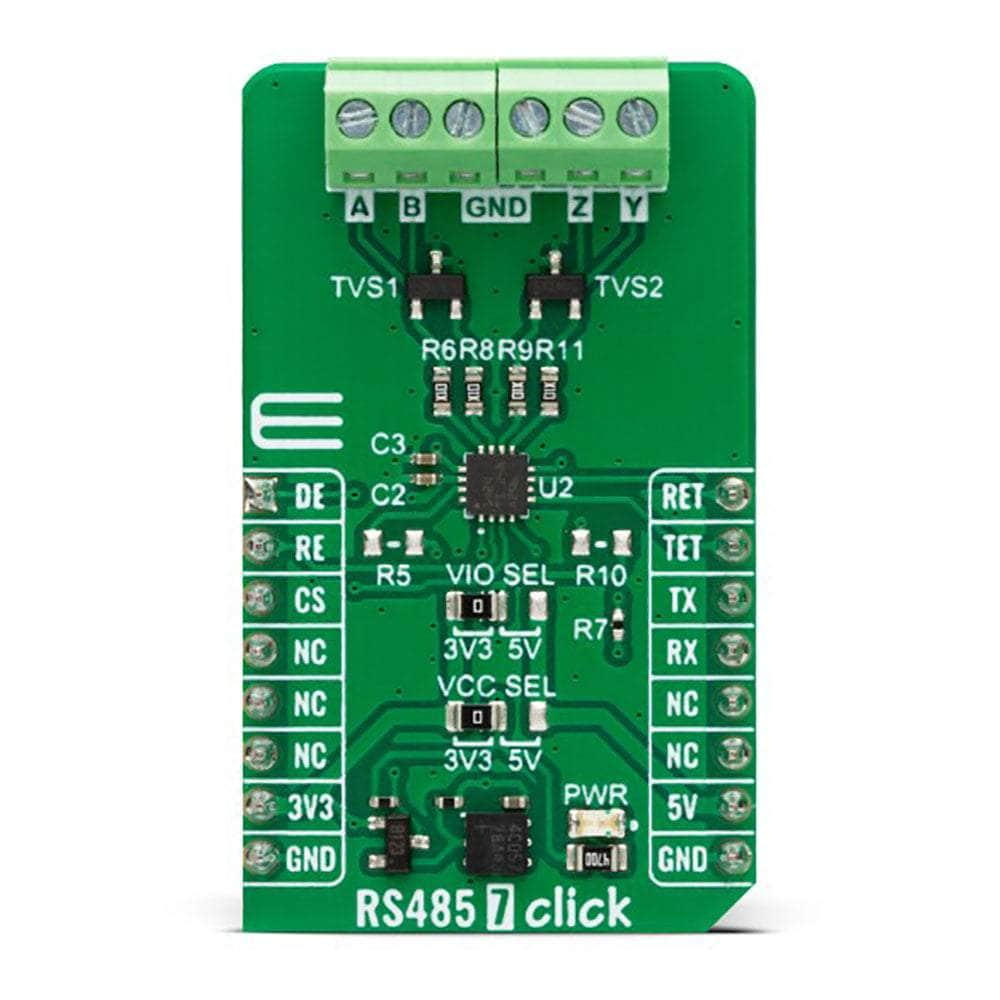
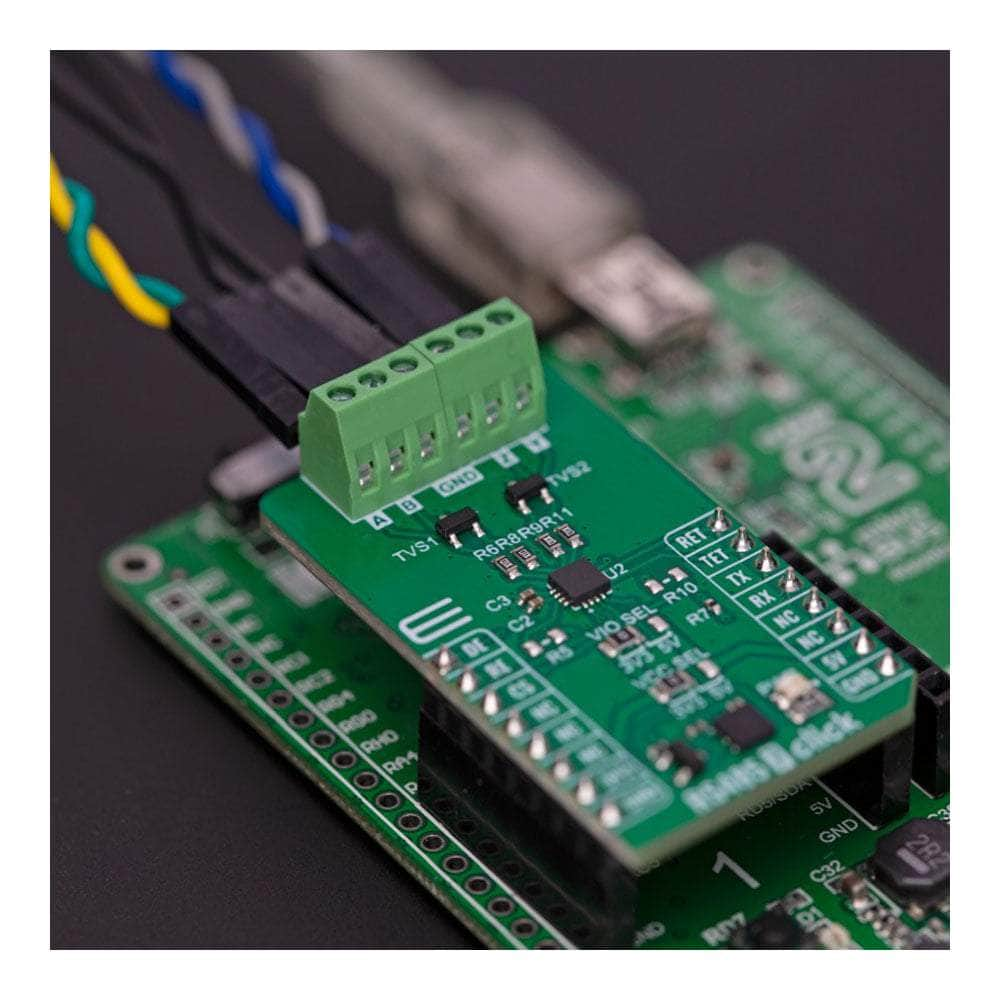

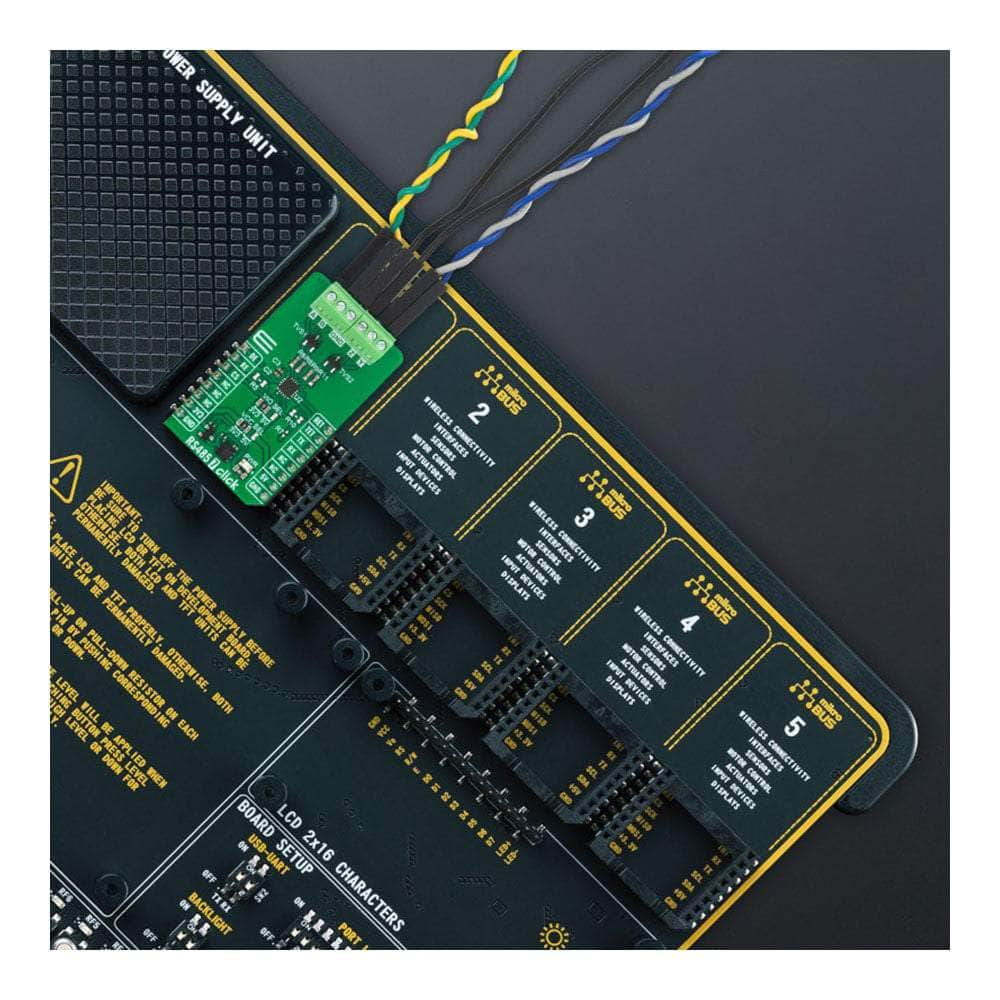
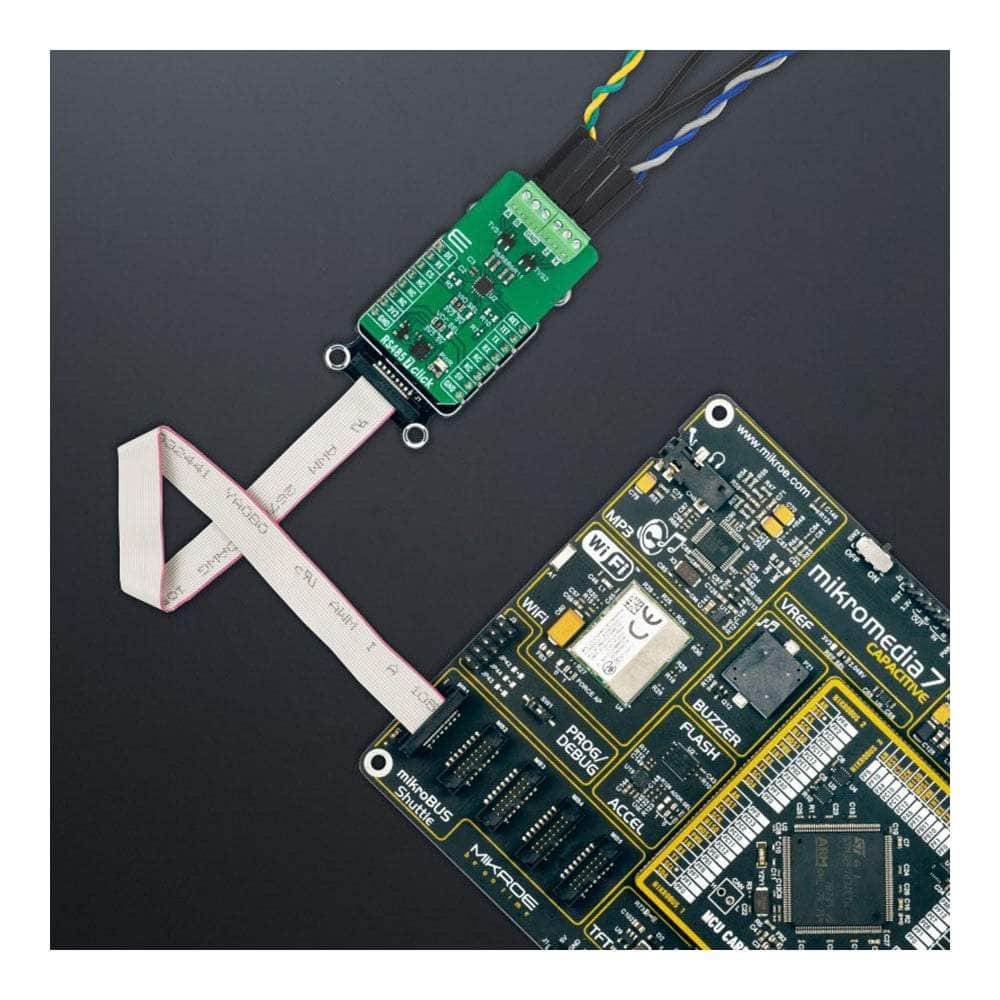
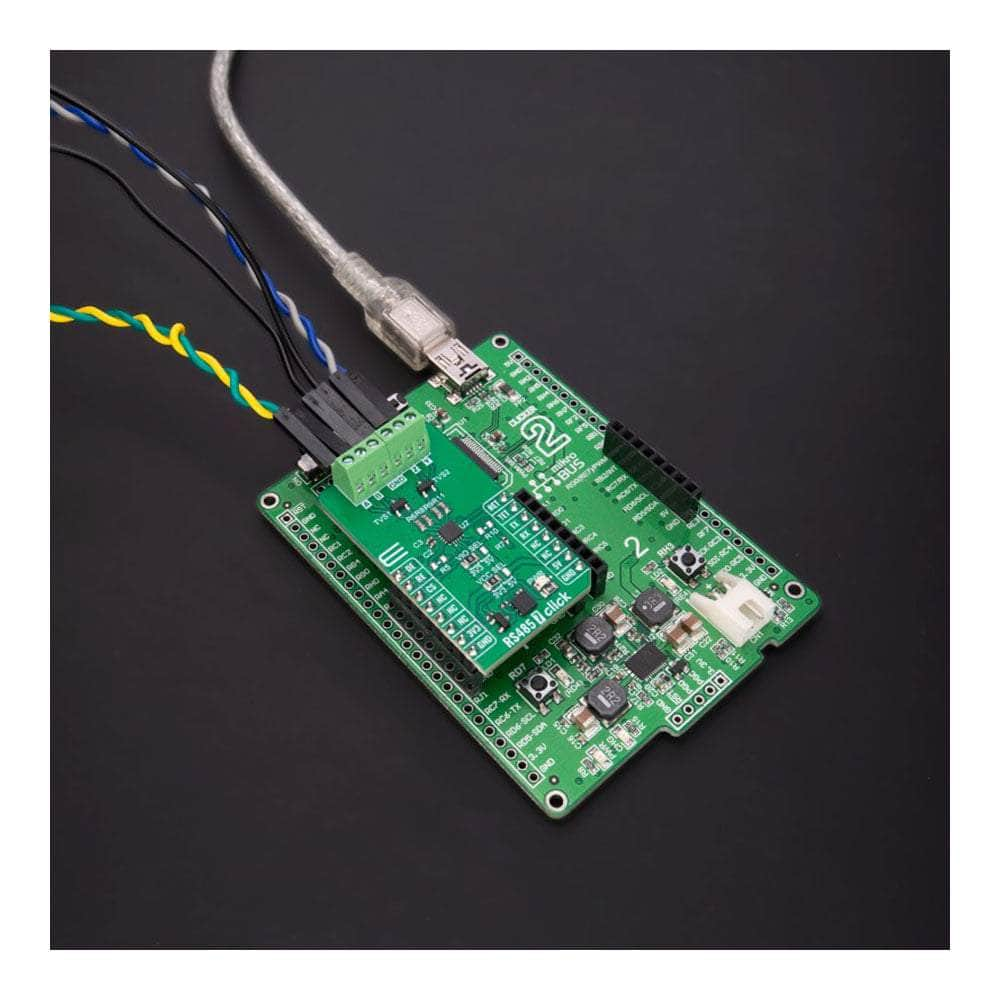
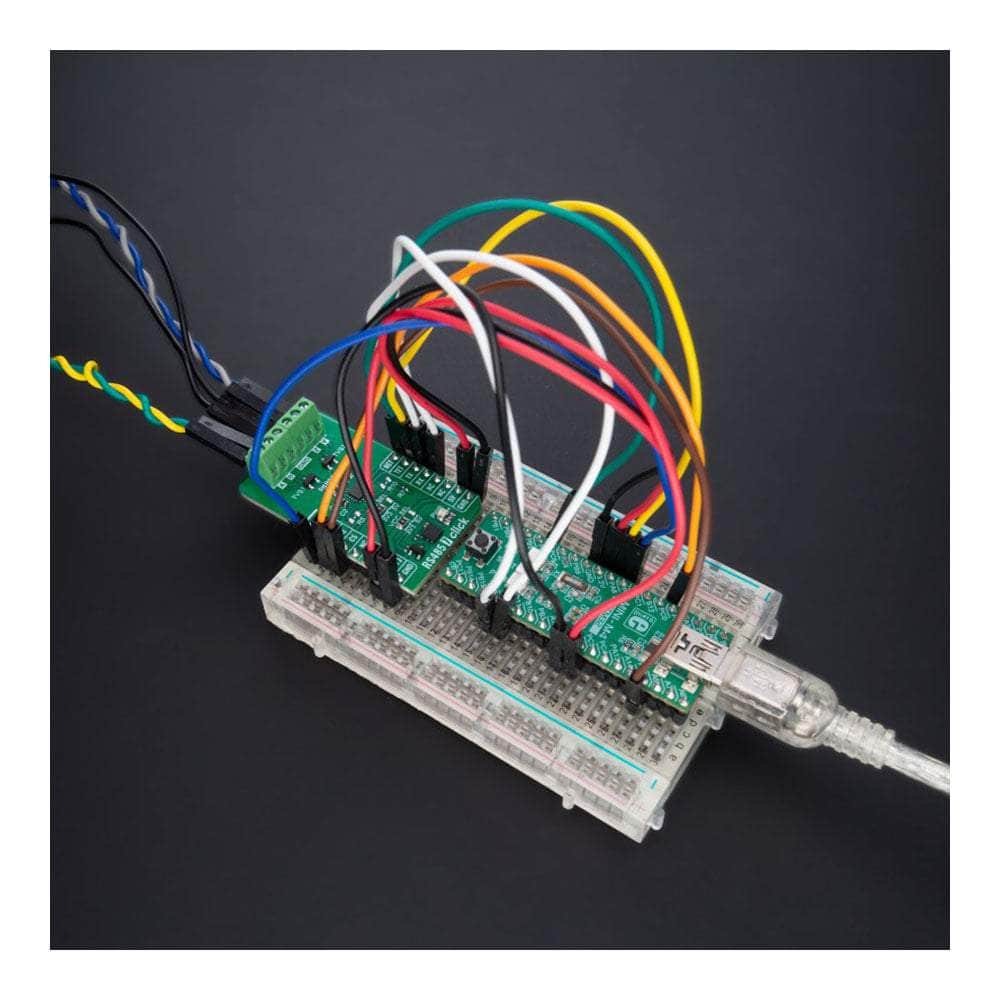
Key Features
Overview
Introducing the RS485 7 Click Board™: Revolutionize Your Industrial Communication
Experience the future of industrial communication with the RS485 7 Click Board™, a sleek and compact add-on board designed to transform your RS485 network communication. Powered by Texas Instruments' THVD1424, a state-of-the-art full duplex RS485 transceiver, this game-changing device promises unparalleled data rate customization.
Unlock the Power of Pin-Controlled Features
Discover the endless possibilities of THVD1424's various pin-controlled features, such as an integrated 120Ω termination resistor, cutting-edge slew rate control, and seamless switching between half and full duplex mode. With a high immunity to IEC Contact Discharge ESD events, your bus pins are fully protected without any additional system-level components.
Experience Low Power Consumption and Hot Plug-In Capability
Save on energy with the THVD1424's impressively low power consumption and enjoy the convenience of glitch-free power-up/power-down functionality. Hot plug-in capability means you can effortlessly integrate the RS485 7 Click Board™ into your existing setup, making it perfect for industrial and multi-point applications over extended cable runs.
Effortless Software Development with mikroSDK
Maximize your efficiency with the RS485 7 Click Board™, supported by a mikroSDK-compliant library that includes user-friendly functions to simplify software development. Fully tested and ready for use, this Click board™ integrates seamlessly with any system equipped with the mikroBUS™ socket, allowing you to focus on what matters most—your project.
Upgrade Your Communication System Today
Don't let outdated technology hold you back. Invest in the RS485 7 Click Board™ and witness the remarkable difference it brings to your industrial communication network. Get ready to revolutionize your workflow and elevate your projects to new heights!
Downloads
Présentation de la carte RS485 7 Click Board™ : révolutionnez votre communication industrielle
Découvrez l'avenir de la communication industrielle avec la RS485 7 Click Board™, une carte complémentaire élégante et compacte conçue pour transformer votre communication réseau RS485. Alimenté par le THVD1424 de Texas Instruments, un émetteur-récepteur RS485 duplex intégral de pointe, cet appareil révolutionnaire promet une personnalisation du débit de données inégalée.
Libérez la puissance des fonctionnalités contrôlées par code PIN
Découvrez les possibilités infinies des différentes fonctions contrôlées par broches du THVD1424, telles qu'une résistance de terminaison intégrée de 120 Ω, un contrôle de vitesse de balayage de pointe et une commutation transparente entre les modes semi-duplex et duplex intégral. Grâce à une immunité élevée aux événements ESD de décharge de contact IEC, vos broches de bus sont entièrement protégées sans aucun composant supplémentaire au niveau du système.
Bénéficiez d'une faible consommation d'énergie et d'une capacité de connexion à chaud
Faites des économies d'énergie grâce à la consommation électrique incroyablement faible du THVD1424 et profitez de la commodité d'une fonctionnalité de mise sous/hors tension sans problème. La capacité de connexion à chaud signifie que vous pouvez intégrer sans effort le RS485 7 Click Board™ dans votre configuration existante, ce qui le rend parfait pour les applications industrielles et multipoints sur des câbles étendus.
Développement de logiciels sans effort avec mikroSDK
Optimisez votre efficacité avec la carte Click Board™ RS485 7, prise en charge par une bibliothèque compatible mikroSDK qui comprend des fonctions conviviales pour simplifier le développement logiciel. Entièrement testée et prête à l'emploi, cette carte Click Board™ s'intègre parfaitement à tout système équipé du socket mikroBUS™, vous permettant de vous concentrer sur ce qui compte le plus : votre projet.
Améliorez votre système de communication dès aujourd'hui
Ne laissez pas la technologie obsolète vous freiner. Investissez dans la carte RS485 7 Click Board™ et constatez la différence remarquable qu'elle apporte à votre réseau de communication industriel. Préparez-vous à révolutionner votre flux de travail et à élever vos projets vers de nouveaux sommets !
| General Information | |
|---|---|
Part Number (SKU) |
MIKROE-5659
|
Manufacturer |
|
| Physical and Mechanical | |
Weight |
0.02 kg
|
| Other | |
Country of Origin |
|
HS Code Customs Tariff code
|
|
EAN |
8606027384950
|
Warranty |
|
Frequently Asked Questions
Have a Question?
-
How can I benefit from using the RS485 7 Click Board™?
By utilizing the RS485 7 Click Board™, you unlock a world of possibilities. You can achieve efficient and reliable communication over RS485 networks, ensuring seamless data transfer and robust system performance. With its exceptional features, immunity to ESD events, and low power consumption, this board provides a highly efficient solution for your communication needs.
-
What applications is the RS485 7 Click Board™ suitable for?
The RS485 7 Click Board™ is highly versatile and suitable for a wide range of applications. Its industrial-grade capabilities make it ideal for industrial automation, control systems, sensor networks, building automation, and many other industrial scenarios. It also excels in multi-point applications over long cable runs, making it a valuable asset in complex setups.
-
Is the RS485 7 Click Board™ easy to use?
Absolutely! The RS485 7 Click Board™ comes as a fully tested and pre-assembled product, ready to be integrated into any system equipped with the widely adopted mikroBUS™ socket. With its user-friendly design and intuitive interface, you can start using it right out of the box. The mikroSDK-compliant library provides functions that streamline software development, making it even easier to incorporate this board into your projects.
-
What are the benefits of using the RS485 7 Click Board™?
By utilizing the RS485 7 Click Board™, you gain access to a world of advantages. This board is specifically designed for industrial and multi-point applications over long cable runs, making it perfect for various scenarios. Its compact size allows for easy integration into your existing systems. The RS485 7 Click Board™ ensures reliable and robust communication, guaranteeing seamless data transfer across your network. It simplifies software development through the mikroSDK-compliant library, enabling hassle-free implementation.
-
What features does the RS485 7 Click Board™ offer?
The RS485 7 Click Board™ is packed with remarkable features. The THVD1424 transceiver provides pin-controlled capabilities such as an on-chip 120Ω termination resistor, slew rate control, and the ability to switch between half and full duplex mode. It also boasts exceptional immunity to IEC Contact Discharge ESD events, eliminating the need for additional protection components in your system. Moreover, the chip's low power consumption and glitch-free power-up/power-down functionality enable hot plug-in capability.

